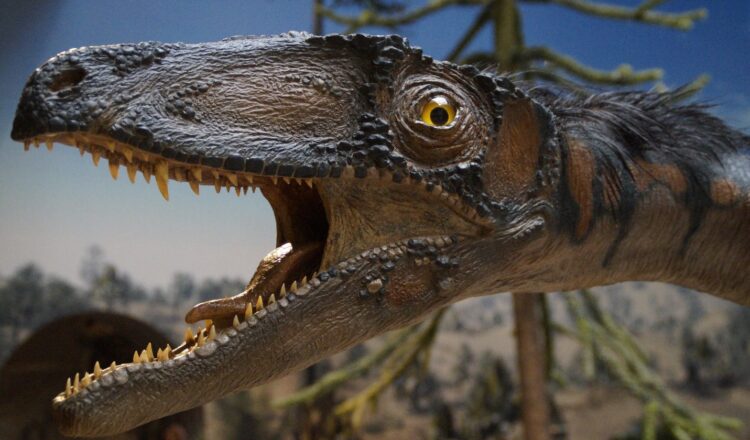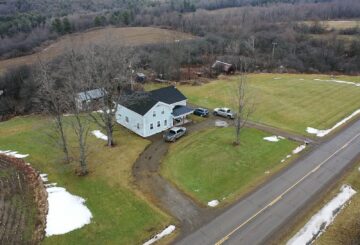By Dan Jordan, Jordan Photography and Consulting
Most think that the dinosaurs went extinct around 65 million years ago, during the last great extinction. Most species of dinosaurs along with most mammals, birds, reptiles, fish, etc. were catastrophically wiped out by what most scientists agree was a large asteroid hitting earth near the Yucatan Peninsula of Mexico with the help of some rampant volcanic activity around the same time.
Obviously, not all life was destroyed during this event. Look around, there are millions of species of plants and animals which are derived from the surviving species. But no dinosaurs, most say. They reckon that there are no thundering giants grazing on the tops of trees, no frightening 30-foot-tall carnivores stalking their prey, and no whale sized toothed fishes roaming the seas; so, the dinosaurs must be all gone. Gone the way of a huge ball of fire from space, or massive volcanic eruptions, or similar.
By the way, the next great extinction is happening now, there are tons of articles about what we humans are causing in terms of species lost forever available on the internet or at your local library. Scary stuff, but something everyone should be aware is happening.
There are no thundering giants, no towering meat eaters, and no massive carnivore fish roaming the oceans (that we know of!). But there are dinosaurs among us, and they’re thriving. Thriving to the extent we humans allow them to thrive, that is.
What, you ask? How can that be? Well, it turns out that birds are modern day dinosaurs. That’s right, they ARE dinosaurs. Throw out all you learned or imagined about dinosaurs when you were younger. Over the eons when dinosaurs ruled the earth, they evolved tremendously. Many developed feathers and some even grew wings and took flight. Scientists have known for some time now that birds evolved from dinosaurs and are in fact a subgroup of dinosaurs.

This artist’s rendering is of an oviraptor, you know, the ones seen in the Jurassic Park movies. The movie got the oviraptor wrong on several counts. Oviraptors had feathers and the latest data suggests that they didn’t hunt in packs and probably didn’t even eat eggs. So much for the name!
Surprisingly though, most of the feathered and flying animal branches in dinosaur evolution dead ended, or the animals died out in one of the great extinctions. Modern day birds evolved from the same family of dinosaurs which included the famous Tyrannosaurus Rex (the tyrant lizard), one of the mostferocious carnivores ever to walk the earth. One would have logically concluded that birds must have evolved from the flying reptiles or flying dinosaurs. It’s hard to imagine that a black capped chickadee is a descendant of the T-Rex of many a child’s nightmares. But it is.
When studying fossil specimens to better understand the evolution of ancient species, scientists look for links between fossils from one time period to another. In 1861, a fossil of Archaeopteryx was found. It is a raven-sized animal resembling both bird and dinosaur. It was feathered and by all estimates, had the skeletal structure to support flight.

Archaeopteryx (see fossil above) is the closest fossil found as precursor-species to modern birds or the link between dinosaurs and modern birds that scientists had been searching for.
The next photo shows the skeleton of Archaeopteryx (left) and a modern pigeon (right).

It’s easy to see the similarities between the two. The presence of a wishbone in both prehistoric dinosaurs and modern-day dinosaurs (birds) was one of the first clues of the evolutionary link.
I won’t delve into the science further, suffice to say that there are countless articles and books on the subject of “where birds came from” and “are birds really dinosaurs?”.
Fast forward to modern day birds. When you look at an emu or an ostrich or even a great blue heron, it’s easier to imagine their dinosaur roots, than say those of a sparrow or chickadee. That said, if you examine the skeletal structure of a chickadee and a T-Rex, you might be surprised at their similarities (size not one of them).
The next two photos are of footprints, one of a prehistoric dinosaur, the other of a great blue heron. They are more similar than different!


GBH’s are among the largest of the modern-day dinosaurs. See the resemblance to its ancestors?

I’ve been keenly interested in dinosaurs since my parents bought me the first plastic models of them when I was a child. I memorized their names, imagined their lives, and my interest in them may have steered me to an education and career in the sciences.
I’ve studied them and I still read books about them. In fact, I just finished one, which inspired me to write this article.
With great interest, I have learned that the modern concept of dinosaurs is greatly different from what we learned as children and students. Scientists have found solid evidence of feathers and even of color. Some traces of pigmentation have taught us that some dinosaurs were quite colorful, not green or grey like we learned. And picture, if you will, T-Rex with feathers and down rather than scales.
Now that I have become obsessed with birds, I can say that my interests have evolved, much like dinosaurs evolved into birds.

Picture this, a giant dinosaur not with green scales, but rather colorful feathers to attract a mate. That is what modern day paleontologists believe. So maybe they looked more like this rooster than the artist’s representations in textbooks and encyclopedias we grew up with?
Or maybe the dinosaurs looked more like this pheasant to attract mates?

OK, I was a little sneaky there. Since I don’t have any original photos of the ancient dinosaurs and I wanted to get some of my photos into this article, I made some feathery assumptions. The point is, though, that we just don’t know exactly what the pre-historic dinosaurs looked like. Fossil evidence is growing rapidly. More and more people are becoming dinosaur hunters and assisting professional paleontologists with digs. New species of dinosaurs are being identified monthly, it seems. Technology advances in the tools paleontologists use to analyze fossil finds are helping understand about feathering and even coloring.
And by the way, ancient dinosaur DNA has been recovered. I’m sure that somewhere, someone is working on cloning a T-Rex or an Oviraptor, or Archaeopteryx. While scary to some, it is exciting to others. We know that fully preserved Wooly Mammoth bodies have been found in Siberian ice and there is a lot of debate among scientists and politicians about the merits of cloning this not-so-ancient mammal.
I would normally here, encourage everyone to get out and observe nature. And I shall. That said, you won’t be seeing any T-Rex’s or Pterasaurs. If you use your imagination, you may see the link between that chickadee on your feeder or the GBH in the pond to the ancient dinosaurs. I know that I do. So read a book about dinosaurs then get out there and watch them all around you.
Disclaimer: My articles are normally filled with original images of mine. Although I am old, I am not old enough to have photographed the prehistoric dinosaurs featured in this article. The prehistoric dinosaur images used here are public domain stock images I located. For a couple of images I credited the website where found. Accessing those websites will open new doors to learning, as some great articles reside in them.







